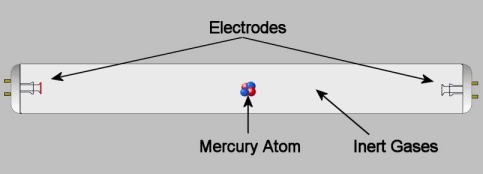 |
|||||
 |
|||||
|
How do fluorescent lights work?
UV Rules to Remember: UVA "A"ges the skin; UVB "B"urns the skin.
UVB is perhaps the better known UV ray. UVB rays vary throughout the day, and are at their highest from 10am to 2pm. They are the UV rays that cause sunburns and tanning. UVB affects the epidermis layer and can quickly cause damage to the skin's surface. Because UVA is capable of penetrating deeper into the skin, it affects the dermis layer and causes photo-aging. Its effects are more long term, and exposure to UVA light can build with time. Unlike UVB, UVA rays are constant throughout the day and both UVA and UVB can cause skin cancer. The UV radiation found in fluorescent lighting is present in two forms: UVB (280-320 nanometers [nm]) and UVA (320 to 400 nm). UV radiation has long been known to cause a myriad of health problems. Some sources indicate that fluorescent lights emit more UVB than the sun. In the 1992 edition of the American Journal of Epidemiology, it was found that fluorescent lights emit "10-30 times" more UVB radiation than the sun does. UVB radiation has been found to be carcinogenic (cancer causing).
UV radiation exposure is known to cause:
People who work in the grocery, restaurant, food processing and deli industry know that food that remains under fluorescent lighting for a short time spoils quickly. As a matter of fact, the closer it is to the bulb, the faster the food spoils. In 1997, Cornell University studies found that 50% of vitamin A and riboflavin in milk may be lost after only 24 hours of fluorescent light exposure.
NaturaLux™ and DirectaLux™ Filters absorb 100% of the harmful UV rays up to 380nm (that means all UVB and almost all of the UVA is absorbed); 81-99% of the UVA found between 380-390nm and 50-80% of UVA found between 390-400nm.
|
|||||